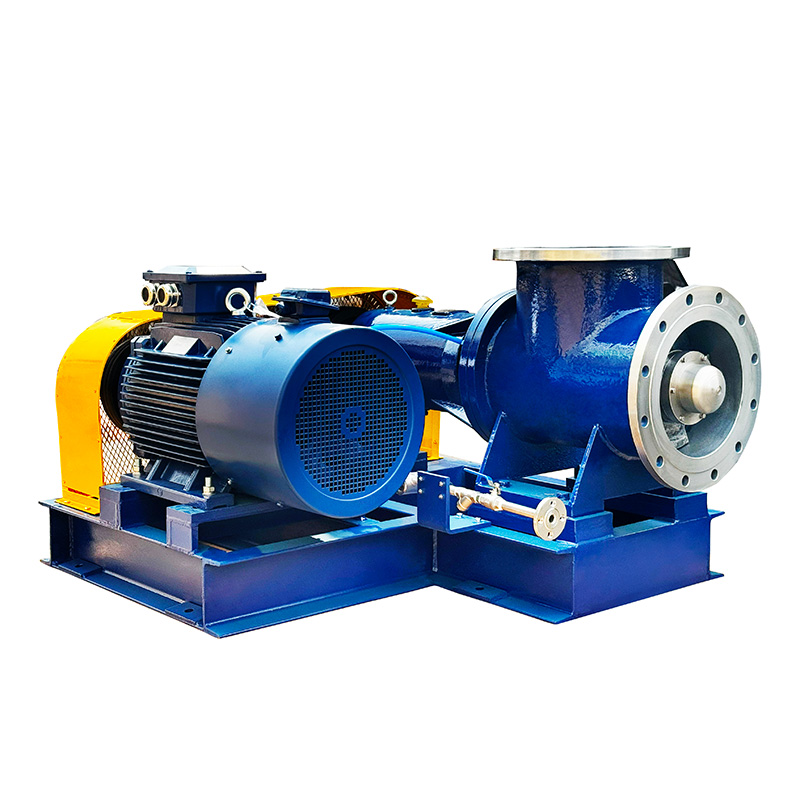Oct 23, 2024
The wearing parts are the most vulnerable parts of the slurry pump. During use, repair and maintenance, special care is required for the wearing parts. UHB slurry pump is a cantilever single-stage single-suction centrifugal pump, which is specially designed and developed for conveying corrosive media containing fine particles. The pump is made of steel-lined ultra-high molecular weight polyethylene, which is a new generation of corrosion-resistant and wear-resistant engineering plastics for pumps. Its outstanding advantage is that it has excellent wear resistance, impact resistance, creep resistance and excellent corrosion resistance among all plastics. So what are the vulnerable parts of a pump and what should be paid attention to?
The pump casing of the slurry pump is generally a cast iron part, and the special pump has an inner lining material, which is prone to cracks under the action of mechanical force or thermal stress. When the slurry pump is impacted by cavitation during work or frozen in winter without draining the accumulated water in the pump casing, it is also prone to rupture. If the damage is serious and cannot be repaired, a new pump casing should be replaced
The pump shaft of the slurry pump is generally a carbon steel part, but it is also easily damaged due to manufacturing quality, use or installation. The pump shaft may crack, fold, wear the journal, damage the thread, etc., and may also break. If the damage is serious and cannot be repaired, a new shaft should be replaced.
The impeller is an important working part of the slurry pump and is made of cast iron. It is also easily damaged due to manufacturing quality and use. The impeller may crack, and the surface may form holes or perforations due to cavitation. The blades may become thinner or wear unevenly due to long-term grinding, or even be crushed by debris. Some defects can be repaired; some defects cannot be repaired, that is, a new impeller should be replaced.
The bearing bush of the sliding bearing is generally cast from copper-tin alloy, which has poor wear resistance and is one of the vulnerable parts that are easy to wear and burn out. The bearing bush can generally be repaired (repair) or replaced with a new one. slurry pump manufacturer slurry pump is suitable for non-ferrous metal smelting industry: especially for various acid liquids, corrosive ore slurry, slurry (for filter press), electrolyte, sewage and other media transportation in wet smelting of lead, zinc, gold, silver, copper, manganese, cobalt, rare earth, etc. The chemical slurry pump is a pump that can adapt to various working conditions, such as conveying acid, alkaline clear liquid or slurry; various corrosive slurries in the smelting industry; various dilute acids in the sulfuric acid industry; various sewage in the environmental protection industry, etc. The pump is both corrosion-resistant and wear-resistant, and has a wide range of uses. The average service life of rolling bearings is generally 5,000 hours, but improper installation, long service time or poor maintenance can also cause wear or damage. Except for individual parts of rolling bearings that can be replaced with new ones, the entire part must generally be replaced.
The mouth ring is also called the leakage reduction or wear reduction ring. It is one of the parts that are easily worn in the slurry pump. It can be repaired or replaced with a new one after wear. When replacing a new leakage reduction ring, its inner diameter should be configured according to the outer diameter (outer edge diameter) of the impeller (referring to the wheel with moving blades). If the outer diameter of the impeller water inlet is worn, it can be turned to eliminate grooves and ovals, and then a leakage reduction ring with a reduced inner diameter can be configured. The outer diameter of the impeller water inlet can generally be turned three times.
Read More

